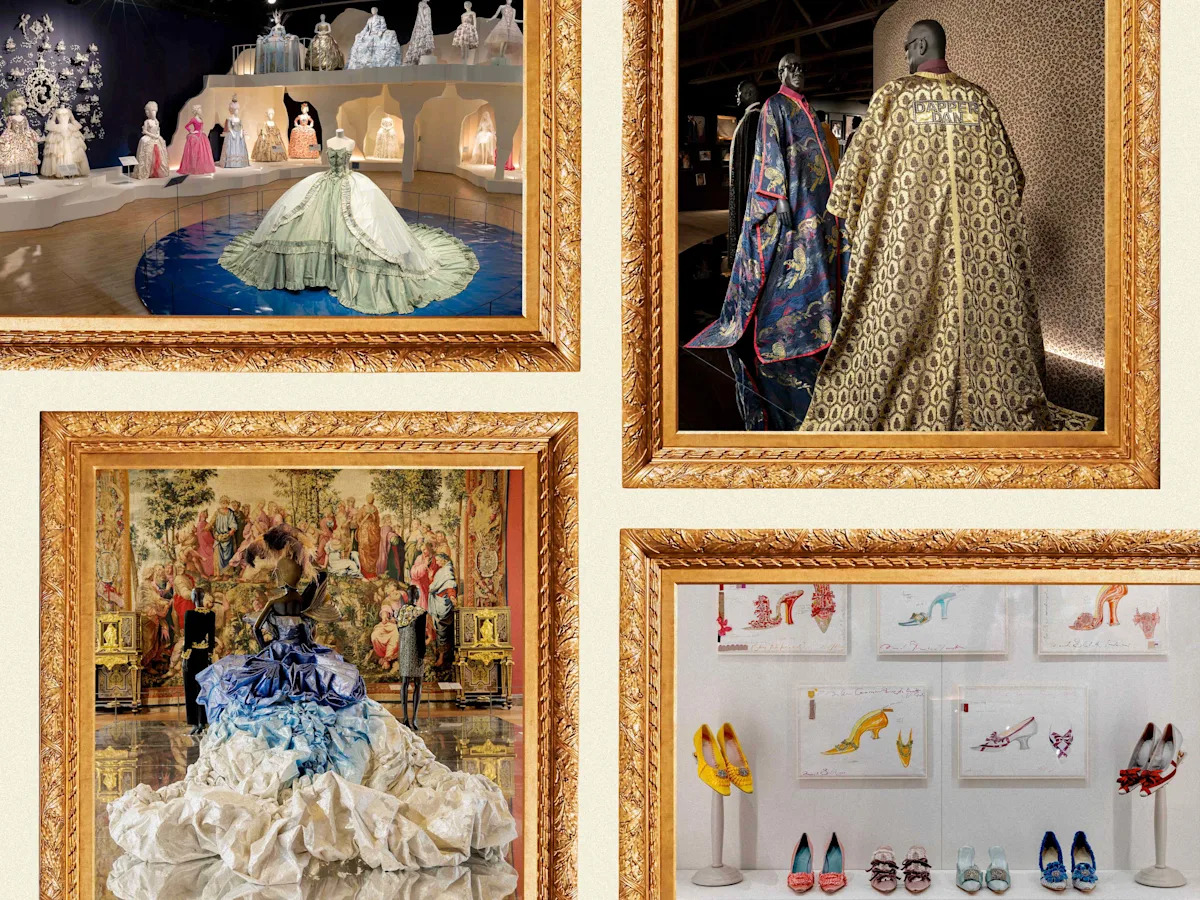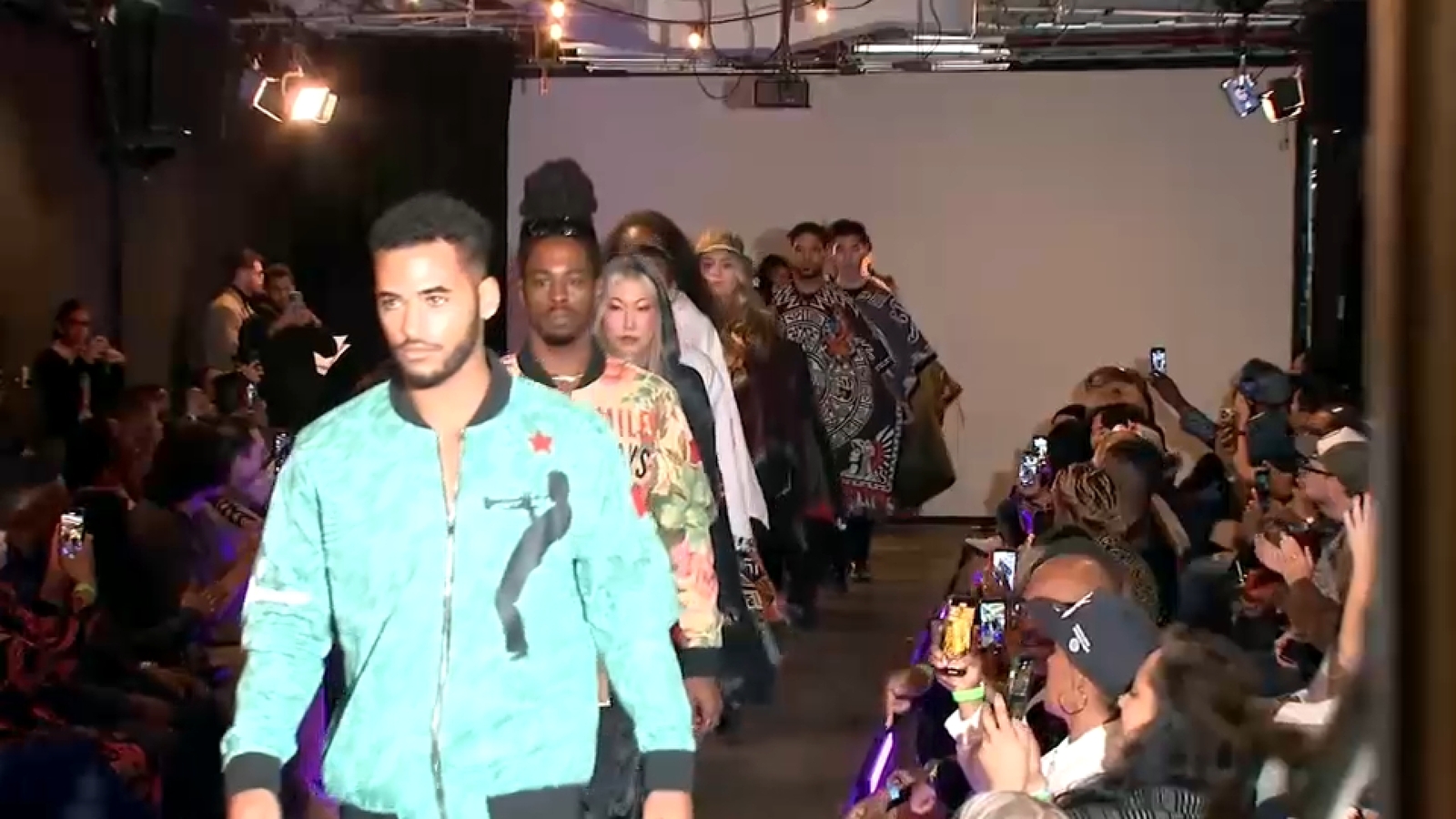Every year, on the first Monday in May, people tune in to watch celebrities walk up the steps of New York City’s Metropolitan Museum of Art on what’s considered fashion’s biggest night. Vogue—more specifically, Anna Wintour—has transformed the opening of its spring fashion exhibit into one of the most publicized moments of the Hollywood social calendar, drawing 1.2 billion views globally across platforms and wall-to-wall coverage from pretty much every form of media.
Even if people seem more concerned with who was “on-theme” and who wasn’t on the red carpet, the Met Gala is, at the end of the day, a fundraiser (and the main source of funding) for one of the preeminent fashion curatorial departments in the U.S. (The 2025 Met Gala raised $31 million—an all-time record.) It’s also brought attention to fashion exhibitions more broadly: By the time it closed in October 2018, the Costume Institute’s “Heavenly Bodies: Fashion and the Catholic Imagination” exhibit—which spanned 60,000 square feet across 25 galleries and two buildings (the Met Fifth Avenue and Met Cloisters)—was crowned the most visited show in the museum’s history, hosting 1,659,647 onlookers.
Getty Images
Alexander McQueen’s “Oyster” dress is displayed at The Met for Savage Beauty.
Fashion has historically had a presence in museums, even if there wasn’t a dedicated department at first. London’s Victoria & Albert Museum started collecting fashion items in the mid-19th century; Paris’s Musée des Arts Décoratifs has also had textiles in its collection since the beginning. The Brooklyn Museum staged an exhibit of fashion drawings in 1929; the Costume Institute opened its first show in 1946. But speaking to the people behind fashion exhibits at museums across the country, there’s one that really changed the landscape.
“‘Alexander McQueen: Savage Beauty’ created a moment where everybody took a step back and was like, ‘Oh, maybe this fashion exhibition and fashion curation should be looked into a little more intensely,’” argues Darnell-Jamal Lisby, Assistant Curator of Fashion at the Cleveland Museum of Art. “That opened the door for many institutions to explore and also encouraged institutions who were already looking at fashion and had fashion departments to be more experimental. It gave them permission to think about fashion in ways that touch people more directly.”
The McQueen exhibit, curated by Andrew Bolton with the support of Harold Koda at the Costume Institute in 2011, was considered a blockbuster for the Met, bringing in over 661,000 visitors. Rafael Gomes, now Director of Fashion Exhibitions at the Savannah College of Art + Design (SCAD), was an in-house archivist at Vivienne Westwood at the time, and he remembers noticing an uptick in requests from art museums in its aftermath.
“It was fun. It was educational. Social media started happening…It was evoking so much feeling,” he says of “Savage Beauty.” “The way it was created—the composition like an editorial for a magazine—was amazing. The music sound, the light design…You start getting goosebumps. It was really an experience. There was culture and leisure merging in a museum.”
“Savage Beauty” checked boxes that didn’t even exist yet. McQueen was “so ingrained within the popular zeitgeist” because of his collaborations with celebrities and his theatrical presentations, plus his death in 2010, that “it created a level of fanfare that felt different from others,” says Lisby. It also exemplified how to utilize staging, sound, and lighting to create a more immersive experience—one that would make people want to post about it online.

The Savannah College of Art and Design
A photo of the “André Leon Talley: Style is Forever” exhibit.
“You want to think about [an exhibit] as a cinematic narrative where, like a film, you have different scenes, and the cumulative scenes create this feeling that you have by the end of the show,” says Matthew Yokobosky, Senior Curator of Fashion and Material Culture at the Brooklyn Museum, where he’s worked on such fashion-centric exhibits as “Solid Gold,” “Christian Dior: Designer of Dreams,” “Africa Fashion,” and “Thierry Mugler: Couturissime.” “Fashion, unlike other art forms, isn’t always presented in a white box—it’s presented in a very dynamic space. It often has sound…There’s a little bit more freedom in presenting fashion in a way that other art forms don’t allow.”
Yokobosky sees his job not so much as “being a keeper of objects,” but rather about “making cultural narrative experiences.”
“It’s important for us to think of ourselves as a little bit of a bridge between the institution and the public, and to be thoughtful about including the public as a part of your consideration of what you might present,” he says. Fashion makes it easy because it’s so quotidian: Everyone wears clothes. And everyone has an opinion about them. “People always have the conversation, ‘I wouldn’t wear that. I would wear that,’” Yokobosky continues. “For people to be able to come to the show and have that kind of conversation about something that they feel they know a little bit about is a big positive.”
Fashion also offers visitors a direct connection to the popular culture they consume or the famous figures they admire. “We had pieces from Michelle Obama, and even if the dresses were a simple design and the colors more muted, they evoke an emotional reaction in visitors,” says Gomes. “It was the status of the wearer that created something so special. You don’t need much around a piece like this. You need to let it breathe because it’s so strong. And it’s very interesting also how to create the composition of the set if you have something so powerful.”
Because of all the different ways people engage with fashion, these exhibits “started to become an entree for many different people who perhaps might not go to museums normally to come,” Yokobosky argues. “All museums are always looking for ways to broaden the audience. It has become this medium that not only allows you to talk about fashion, but to talk about so many topics, and is attractive for a broader audience.”
We’re seeing this in the type of institutions embracing these shows (the Louvre just staged its first-ever fashion exhibit, complete with a star-studded opening party that seemed to borrow a few cues from the Met Gala), as well as in the growing opportunities in the field. Gomes joined SCAD when the university wanted to open what would become the SCAD FASH Museum of Fashion + Film in Atlanta. “[SCAD] had the fine art museum [in Savannah], and there was one gallery dedicated to fashion exhibitions,” he explains. “Those fashion exhibitions were attracting so many people. Paula Wallace, the SCAD president and founder, saw the potential and also how we can educate with fashion exhibits…This year, we’ll celebrate our 10th anniversary.”

Luca Stoppini / Cleveland Museum of Art
An Armani garment featured in “Renaissance to Runway: The Enduring Italian Houses”
Lisby was brought to the Cleveland Museum of Art by chief conservator Sarah Scaturro, a fellow alum of FIT’s MA program in fashion and textile studies: history, theory, and museum practice. He’s conceived original shows such as “Egyptomania: Fashion’s Conflicted Obsession” and the upcoming “Renaissance to Runway” for the museum, each one bigger than the last. (The latter, which opens in November, will take up about 9,000 square feet of gallery space.) He also works on programming around these exhibits—talks, parties, object viewings—which helps with bringing in younger folks into the over-100-year-old museum.
“Unfortunately, art museums can feel a little transcendent at times, whereas fashion is a little more quotidian,” he says of the appeal of fashion exhibits. “We wear clothes. Some people might consider it a living art or at least this living form of creative expression that they can imagine themselves participating in.”
These shows can also broach topics and address issues that you might not see elsewhere in the museum. “People use fashion as a portal to understand the history of art, but also connect with the ideas that often are articulated through design,” Lisby explains. “For ‘Egyptomania,’ I talked a bit about decolonization and about cultural appropriation and appreciation.”
“Fashion is a space where people feel more comfortable to have very difficult conversations,” he continues. “This younger generation is very upfront. They love having those conversations. They engage in those conversations. And I think fashion is a place for them to do that.”
This summer, the Brooklyn Museum finished its run of “Solid Gold” in July, and the Costume Institute opened “Superfine: Tailoring Black Style” in May. Just a few months ago, SCAD FASH hosted a first-of-its-kind-in-the-U.S. show about Jeanne Lanvin in Atlanta and one about Christian Dior’s florals at its campus in Lacoste, France. Tomorrow, the museum debuts “André Leon Talley: Style is Forever,” a retrospective that honors the late editor’s legacy. Meanwhile, the Cleveland Museum of Art is readying to unveil “Renaissance to Runway,” its biggest fashion show yet this November.
This is by no means an exhaustive list of all the fashion you can see in museums right now, which proves these exhibits aren’t simply a trend.
Read the original article on InStyle


